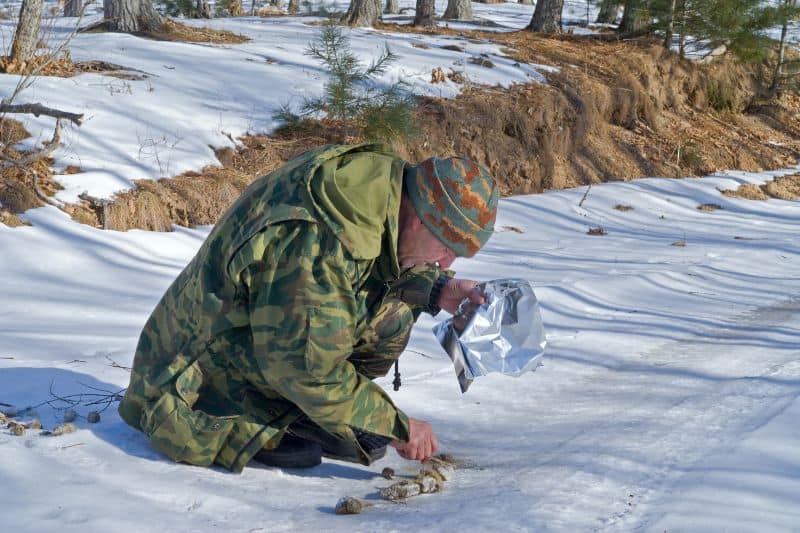A biome is a geographical region on the surface of the earth with specific climatic features such as temperature and precipitation and favors only certain plant and animal life. This constitutes an ecosystem that is able to sustain itself with regard to the various adaptations it has.
Consequently, deserts, rainforests, and grasslands are biomes since they have a specific location on the earth’s surface and a unique climate favoring specific animal and plant life.
Apart from the oceans, the largest biome in the world is the Taiga biome, which means forest in Russia. It is also known as the needle-leaf forest or the boreal forest.
This article will expound on the Taiga biome, giving information on its location, climate, temperature range, and plant and animal life.
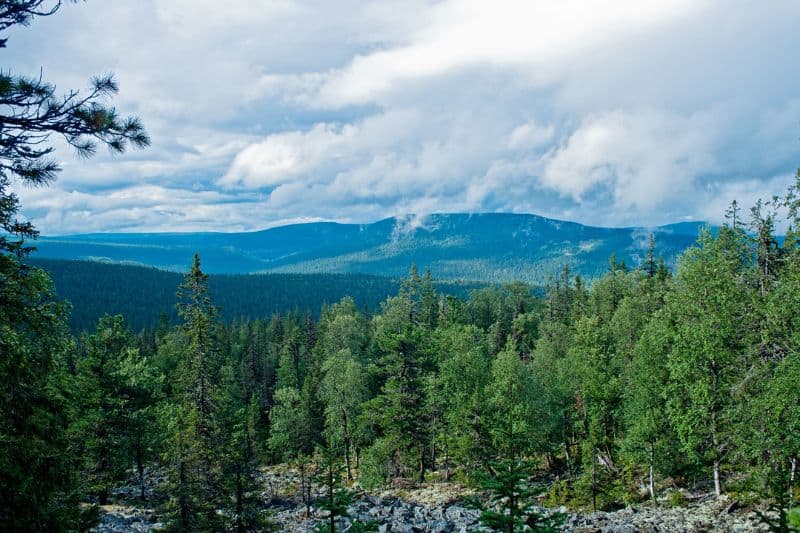
Location of Taiga Biome
The Taiga biome stretches in the Northern Hemisphere, taking huge chunks of North America and Eurasia, especially Canada and Russia, respectively. It also stretches in Northern Europe in countries such as Finland, Norway, and Sweden and spans across Alaska and Scandinavia.
The Taiga biome occupies about 27% of the Earth’s surface. It is located south of the Tundra biome, which is characterized by a land frozen by ice and constant snow.
Because of its location, the Taiga biome is fairly cold. It is to the north of the temperate deciduous forests and grasslands, which are warmer. It is located above the Tropic Cancer between northern latitudes of 50° and 70°.
Climate of Taiga Biome
The tropical rainforests are between the Tropic of Cancer and the Tropic of Capricorn and, thus, are warm. Nevertheless, the Taiga biome is close to the Arctic Circle, the next major latitude above the Tropic of Cancer. The areas around this latitude are freezing cold.
Moreover, there are cold winds that blow the cold Arctic air into the biome, making it extremely cold most of the year. Hence, this climate is called the subarctic climate.
The earth rotates around the sun annually. Geographically, this means there has to be an earth’s surface exposed to the sun for a period of time and seasonal change. However, due to this tilt of the sun, the Taiga biome faces away from the sun, resulting in the long winters, which are extremely cold.
Another effect is that there is less radiation from the sun to heat the land up. For these reasons, the summer is barely 3 months, and winter is double that.
Precipitation in this biome takes place in both winter and summer. It falls as snow in winter, while in summer, as rain. Dew is also a form of precipitation in this biome, though overshadowed by snow and rain.
For over half a year, there has been constant falling of snow with an annual height of 50-100cm. The summer season enjoys an average rainfall of 25-50cm annually, bringing the average precipitation to about 75cm.
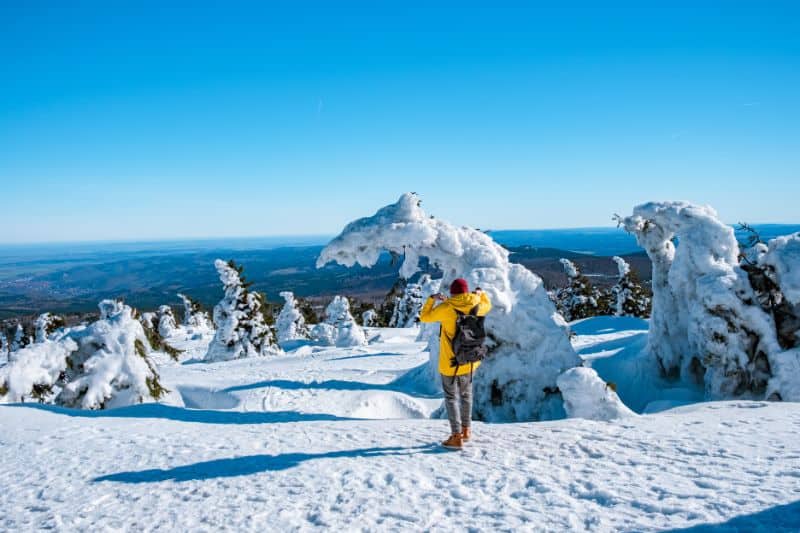
Temperature
The Taiga biome starts where the Tundra biome ends. The biome is, therefore, characterized by a lot of cold throughout most of the year. There are two major seasons, that is, winter and summer.
Typically, the summers are short due to cold, spanning about 50 to 100 days per annum, with over half the year experiencing winter. Winter has temperatures as low as -54°C and as high as -1°C. As a result, during winter, there is a lot of snow falling, and the land is frozen with ice.
This lowers the average temperature to below 0°C. However, though short, the summers are warm and encourage the growth of some plants. This warmth ensures humidity, a basic requirement for plant growth.
With summer temperatures between -7°C and 20°C, most ice melts, permitting soil aeration essential for plant life. Also, during these limited days, there are clear skies and no frost in the biome. The warm temperatures reduce snowfall and encourage rainfall, which helps plant and animal life.
Autumn and spring are the shortest seasons in the biome to the point that they are almost insignificant. Spring enables animals that have gone on hibernation to come out to the wild in preparation for the summer season.
At this time, large water bodies begin to melt, giving way to watering points for animals. The seasonal change of the Taiga biome translates to temperatures that are either hot and humid or very cold during the year.
Precipitation
The Taiga experiences relatively low precipitation throughout the year, normally 200–750 mm (7.9–29.5 in) annually and, in some areas, 1,000 mm (39 in). Most of the precipitation in the Taiga falls as rain in the summer but as fog and snow in the winter. The fog is especially predominant in low-lying areas during and after the thawing of frozen Arctic seas.
The sunshine is not abundant in the affected Taiga areas, even during the long summer days. As evaporation is consequently low for most of the year, precipitation exceeds evaporation and is sufficient to sustain the dense vegetation growth, including large trees.
Snow may remain on the ground for as long as nine months in the northernmost extensions of the taiga biome. The yearly precipitation is 30 – 85 cm (12 – 33 in).
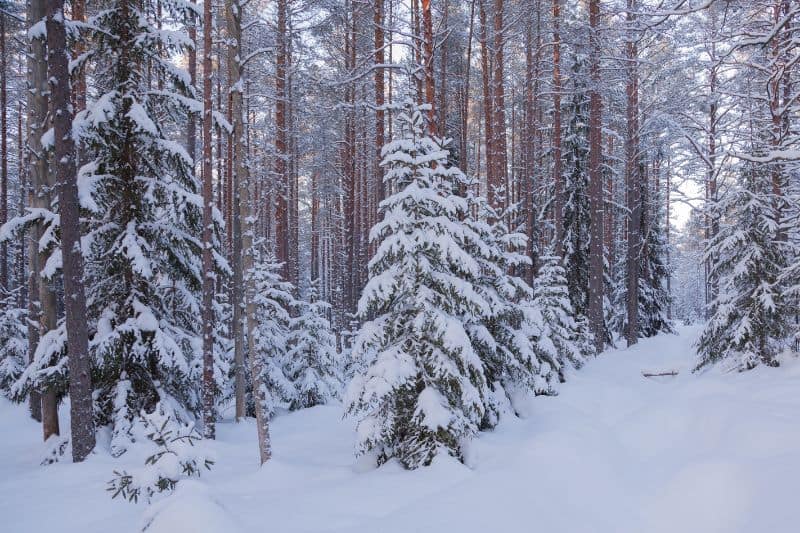
Plants of Taiga Biome
The biome is home to various species of plants. These plants are adapted to an extremely cold climate and mainly consist of coniferous trees, evergreens, and spruces.
These conifers are the most dominant type of trees in the Taiga biome. There are other plant species, such as aspen and birch, which, owing to their broad leafology, can maximize light absorption despite this biome’s climate. There are also some lichens and mosses.
Adaptation is essential for plants to survive in this type of biome. They have to develop special key features that ensure they adapt to the varying climates of the Taiga biome.
Leaves are the core source of food manufacture for plants, and a lot of energy is needed. The absence of sunlight in the biome is an inhibiting factor, which means plants must have adaptable leaves.
Besides the aspen and birch, the evergreen has green leaves throughout the year, thus the plant name ‘evergreen.’ This means they have ample food due to the presence of chlorophyll in their leaves.
Furthermore, this plant does not shed its leaves and keeps the same leaves for a very long time, enabling them to use minimal solar energy. This makes the plant grow in breadth and length rather than growing numerous leaves.
Coniferous Trees
- Pines
- Spruce
- Cedar
- Hemlock
- Larches
- Fir
- Birch
Rare Plants (Not Common)
- Oak
- Willow
- Alder
- Maple
- Elm
- Aspen
- Rowan
Bushes
- Wild Strawberry
- Blueberry
- Bilberry
- Cowberry
- Cranberry
- Lingonberry
- Cloudberry
- Partridgeberry
Others
- Ferns
- Ramps
- Morels
- Grasses
- Lichens
- Mosses
Plants also exhibit other structures in their morphology, such as needle-like leaves, which minimize the surface area of the leaf in contact with the atmosphere to reduce water loss through transpiration.
The leaves are also waxy to reduce the chances of freezing or drying of the leaves. They keep their needle-like leaves throughout the year to start photosynthesis as soon as the weather gets warm.
These trees grow close to each other, protecting them from excessive wind. Coniferous trees are conical in shape, with their branches pointing downwards. It’s a feature that lets the snow slide off the slanted branches rather than pile up, which can freeze the plant.
Other than that, continuous snow falling on plants may add to their weight, which leads to the breaking off of stems and branches.
The biome is also favorable for crop farming. Various growing seasons vary with the climatic changes in the biome. Countries such as Finland and Scandinavia have long growing seasons, with areas near the Tundra biome having the shortest growing seasons.
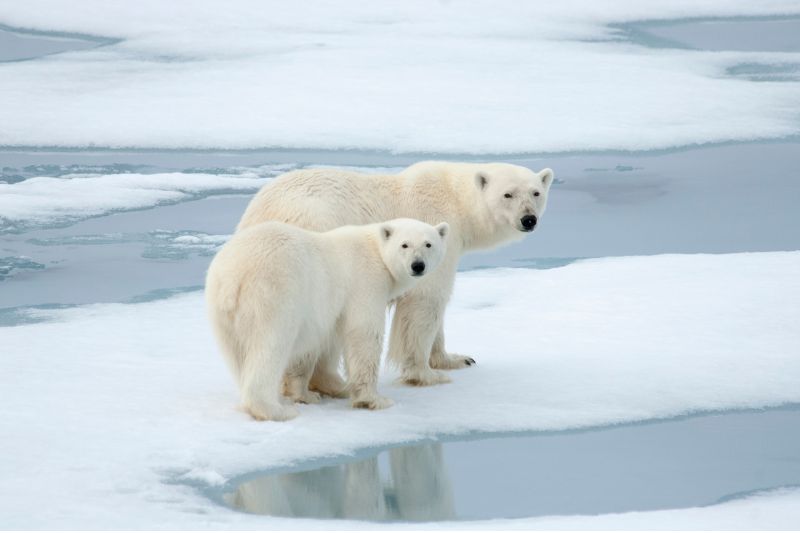
Animals of Taiga Biome
There is a limit to the number of animals that can survive in this biome due to the cold temperatures and climatic variations. Still, there are many animal species spanning from mammals, birds, and various insect species.
Mammals
- Bears(Brown bear, American black bear, Asiatic black bear, Polar bear, Grizzly bear)
- Siberian Tigers
- Arctic fox
- Wolf (Arctic wolf, Grey wolf)
- Deer
- Moose
- Elk
- Caribou
- Ermine
- Moles
- Squirrels
- Chipmunks
- Bobcats
- Snowshoe Hares
- Wolverines
- Lynxes(Canada lynx, Eurasian lynx)
- River Otter(North American river otter, European otter)
- Weasel(Siberian weasel, Least weasel)
- Coyote
- Badger
- Stoat
- Sable
Birds
- Sparrows
- Finches
- Woodpeckers
- Crows
- Eagles
- Rough-legged buzzard or hawk
- Owls, Snowy owls
- Raven
- Falcons, Peregrine Falcons
- Snow geese
- Siberian thrush
- Warbler
- Grouse
- Crossbills
Insects
- Mosquitoes
- Ants
The herbivorous animals are found in parts of the biome with more trees to feed on. The presence of snow in the Taiga biome translates to ponds and water bodies during spring and summer. These are usually the breeding grounds for insects and serve as a source of food for rodents and birds, and for this reason, they can be said to be keystone species.
Birds from other biomes come to the Taiga biome to nest and feed on these insects and then migrate to their respective biomes towards the end of the summer. However, seed eaters like sparrows and finches stay in the biome all year round.
Like the plants, animals in the biome must have adaptive features to survive in this cold climate. During the summer, more animals are in sight than during winter, and that’s because most of them either migrate to warmer biomes where they can cope easily, especially for birds, or hibernate till the next summer season.
Bears are famous for this. They store volumes of food in their habitat enough to last them for 6 months when they will next see daylight. Migration is, at times, made difficult even for birds if the rate of snowfall is heavy.
But still, there are animals that do not migrate nor hibernate. They are specifically adapted to the cold. Features such as a thick layer of fat for mammals and numerous feathers ensure the body’s warmth is conserved despite the surroundings. Tigers have large paws to walk through deep snow.
Feeding habits do not change. Because some animals still need to eat during the winter season. They use camouflage, a common feature for animals such as ermine and snowshoe hare. They are able to change their fur coats from the normal brown to white during winter, enabling them to move in the snow without being noticed.
